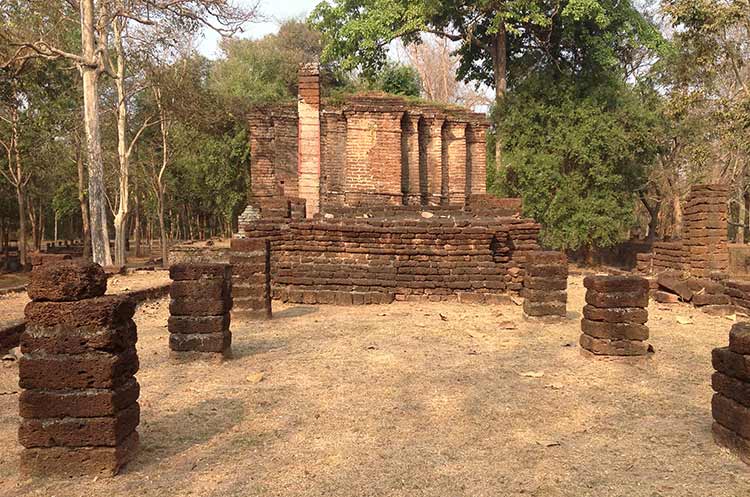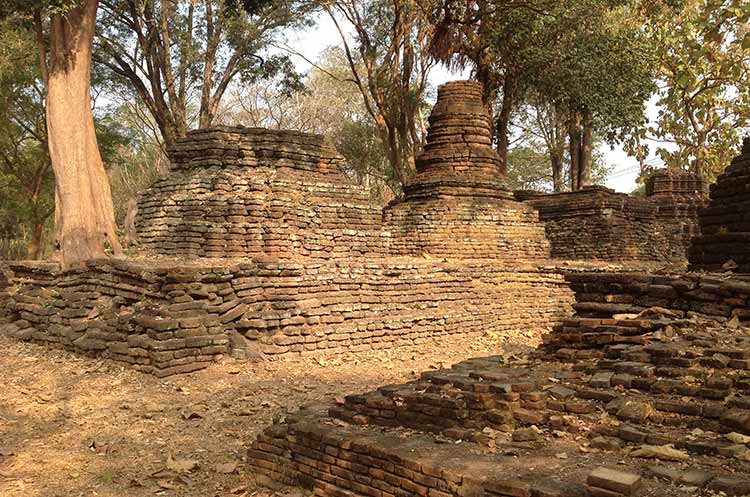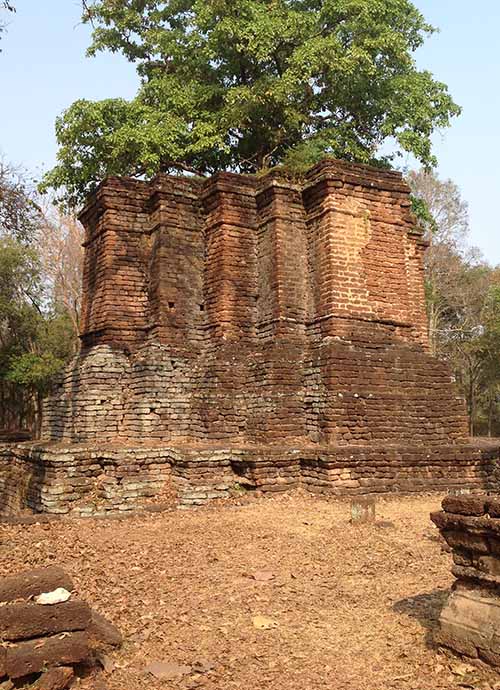
Wat Avasa Yai
The Wat Avasa Yai is a large temple founded in the 15th or 16th century. It is located outside the old walled town in a forested hilly area known as Aranyik, the North zone of the Kamphaeng Phet Historical Park.
Buddhavasa and Sanghavasa area
The temple comprises of a Buddhavasa area and a Sanghavasa area. The Buddhavasa area contains structures dedicated to the veneration of the Buddha, while the Sanghavasa is the area where the temple’s resident monks living quarters were.
The Wat Avasa Yai is oriented towards the East. The temple comprises of a very tall principal chedi, a main viharn, an ubosot, a smaller viharn and a large number of subsidiary chedis. The Buddhavasa area is enclosed by its own wall. In front of the temple is a large pond that was dug out from the laterite soil.

L-shaped platforms surrounding the viharn
At the front (East) of the temple are two L-shaped platforms partly surrounding the principal viharn. Each platform supports eight subsidiary chedis in several shapes, some circular, some with indented corners. Adjoining the platform South of the principal viharn is a smaller viharn (an assembly hall) while adjoining the North platform is the ubosot, the hall where monks get ordained.
High laterite base supporting the large viharn
In the center of the Buddhavasa are the principal chedi and the main viharn. A high laterite base with balusters and stairways on three sides supports the large viharn or assembly hall. Today, merely the lower part of columns that supported the wooden roof and the pedestal that carried the temple’s principal Buddha image remain. Buddhist devotees would walk the base circling the viharn in a clockwise direction to make merit.
Principal chedi
Behind the viharn is the temple’s most important structure, the principal chedi. Only the lower section remains of what must have been an imposing structure in its time. Standing on an octagonal foundation measuring 16 meters long on each side is a very high base with 20 indented corners that once supported the chedi. The upper section, believed to have been a bell standing on several receding circular tiers, has collapsed.

Sanghavasa area
Outside of the walled Buddhavasa area is the Sanghavasa area where the resident monks of the temple lived. This area contains the remains of the monks living quarters, a pond dug out from the laterite, wells and several open pavilions to provide shelter and for resting, called Sala.